Miter saw gauges confuse a lot of finish carpenters for one simple reason—they aren’t designed for finish carpentry, they’re designed for framing and stairs. Let me show you what I mean. Read the full article…
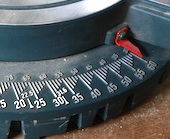

Miter saw gauges confuse a lot of finish carpenters for one simple reason—they aren’t designed for finish carpentry, they’re designed for framing and stairs. Let me show you what I mean. Read the full article…

Miter saw gauges confuse a lot of finish carpenters for one simple reason—they aren’t designed for finish carpentry, they’re designed for framing and stairs. Let me show you what I mean. Read the full article…

Two recent events inspired me to write this article. First, I began using—and decided to review—a vacuum system that employed HEPA (High-Efficiency Particle Air) filtration. The second event was a class I took on safe practices when dealing with lead-based paint. All the stars seemed to align, as I just had a prospective client contact me about a major remodel in a house built circa 1910. I have the training, I have a client, all I need to do is follow the prescriptive path set forth by the governing agency. It is here that the story begins to derail. Read the full article…
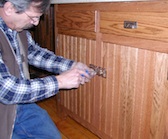
I’m more of a carpenter than a cabinet maker. I do mostly trim and cabinet installations now, and use my cabinet making knowledge on rare occasions—mostly to alter existing cabinets, as opposed to making new ones from scratch. For the few new cabinets that I do make, I use the latest technology. For example, I use pocket screws to assemble face frames, and SenClamps (Senco corrugated fasteners) to fasten cabinet sides to the frames—eliminating the clamping and drying time saves so much time when you’re making cabinets. Read the full article…

Tape measures. There are so many types, yet don’t they all do the same thing?
Justus Roe & Sons began manufacturing steel tape measures in 1865. A patent filed on July 14, 1868 by Alvin J. Fellows of New Haven, Connecticut brought an “Improvement in Tape Measures”—a spring-powered retracting mechanism. The spring-powered tape measure, which we’re all so familiar with, gained popularity in the 1900s, when it started knocking folding rules off the work site. Read the full article…
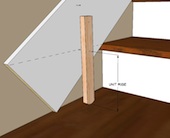
I love to hear old-timers tell stories. At a JLC Live stair building seminar taught by Jed Dixon, I talked with Jed and Don Jackson (editor of JLC) about installing skirt boards and how I was taught to install the treads and risers first, and then scribe the skirts over the top of them. Read the full article…
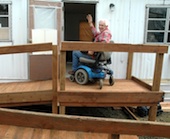
One of my first memories, in the early 1930s, when I was 4 or 5 years old, was of our mother taking care of a neighbor woman, Eula Hughbanks, who had tuberculosis. TB was more common in those days, with little hope for a cure, especially for poor people. The nearest medical care of any kind was 30 miles away. Such care might as well have been on the other side of the world for most of us, as few had an automobile. So people did what people have always done, especially in hard times—they took care of one another. Read the full article…
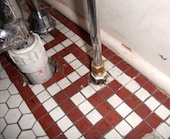
Remember the term “Made in the U.S.A.”? It wasn’t that long ago that the phrase was often used by manufactures to instill confidence in the product they were promoting. By-and-large, American manufacturers have produced good-quality parts and materials. In my 25+ years in the trades, I can only recall a couple of incidents where we received a part or component made in the U.S. of such poor quality that it failed immediately after being installed. Read the full article…

What’s next, self-sealing housewrap? Well, maybe….
According to a recent article in New Scientist, concrete will soon be able to heal its own hairline fractures. Yes, you read that right. Read the full article…
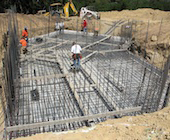
With the 2007 CBC codes addressing Earthquake Defense more progressively, we’re feeling more like Carpenters of Steel than carpenters of wood! The amount of steel in new buildings in California for seismic structural engineering is changing the way carpenters frame. For production framing here in California, we used to use the words “blow and go” a lot. But those days are over. Now all anyone talks about is “mechanical connections.” Read the full article…

In my article on building a sunburst I described how to find the circumference of a circle given a specific radius. I then divided that circumference in half, because I was working with a half-round arch. This gave me the length measured along the arches curve, otherwise known as the arc length. Finding the arc length of a segmental arch is a little more difficult, but a construction calculator makes it incredibly easy. Read the full article…

It’s not easy to remember every code requirement, especially when you don’t build stairs often! Here’s an easy-to-access and easy-to-understand illustrated version of the 2009 IRC code as it applies to stairs. Read the full article…

A finished skirt board on a flight of stairs is one of those tasks in finish carpentry that remains in prominent view, always open to critique. It’s critical that the workmanship is of the highest caliber. Read the full article…